At the end of June, when the photographs in today's post were taken, the tourist season started transforming my sleepy hometown into a much louder and more crowded place, and that transformation was getting visible even early in the morning. But fifty - sixty kilometers from there ...
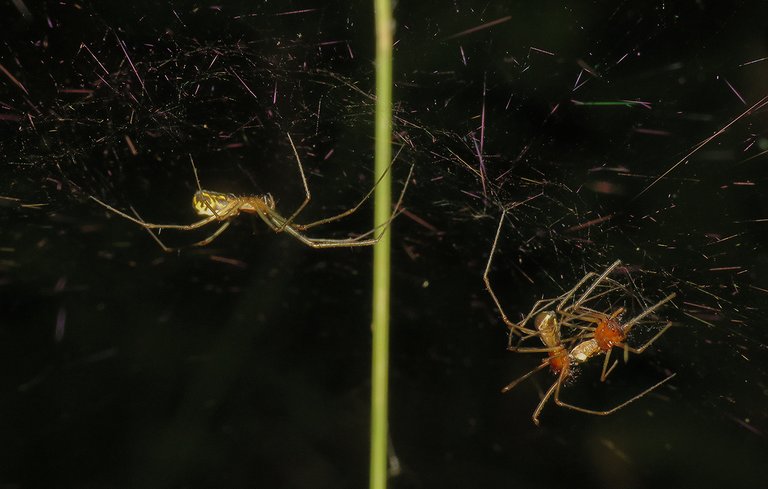
... in the woods of the central part of Istra, things were still quiet like in winter.
I mean, things were quiet only when it comes to people and their activities ...
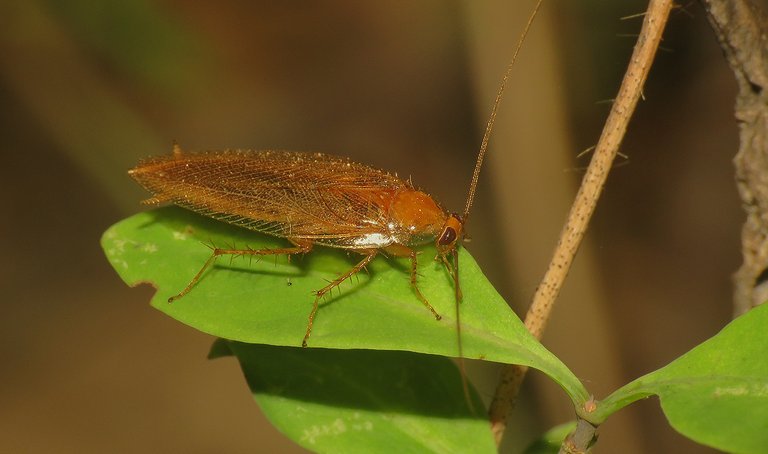
... because other inhabitants of this planet, especially those small ones, were active and numerous. When it comes to macro photography ...
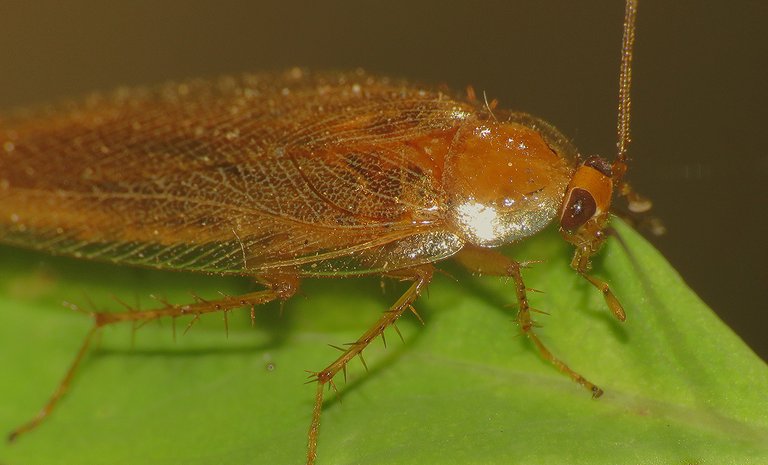
... a lot was going on and the season has reached its peak.
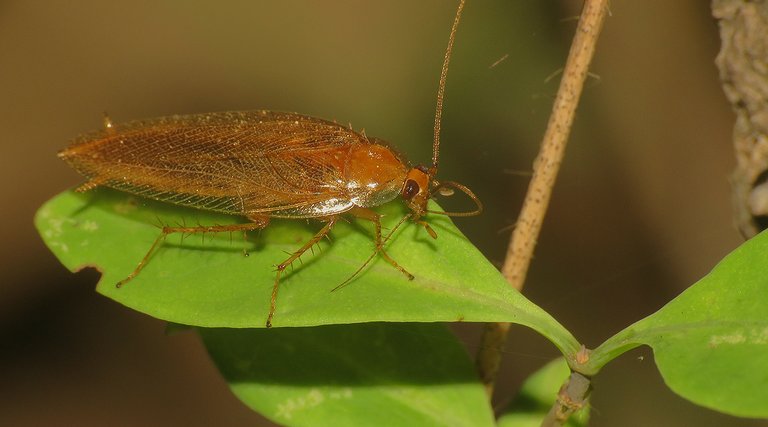
In this, and in the previous two photographs, you can see a small cockroach from the Ectobiidae family. Ectobius vittiventris is a species that lives only in the woods and feeds on decomposing plant material.
The situation shown in this shot was photographed on the large horizontal web of a female Neriene radiata spider.
Here you can see all the spiders present on the web on that occasion. The one in the left half of the picture is a female, while in the right half of the picture, you can see two males.
The dead male was probably killed by the female before or after the mating. The second male, which was also there for mating, stopped to get a free meal. Probably before attempting another risky reproduction ritual. Or maybe, after a successful mating that didn't end with a fatality. But it could end that way at any moment. When a male is on the web, a lot of attention is required to avoid triggering the female predatory instinct.
Between the shots, I was also recording the scene in a video format. That video, with a couple of photographs, was published three weeks ago in the Arachnids community. Here you can see only the unpublished photographs that I saved for this post about all the stuff that I encountered in those days at the end of June 2022.
Here you can take a break from the macro-view and take a look at one of the plants that were growing in the shade of the trees, near the path that leads through the woods. In the middle of that narrow path ...
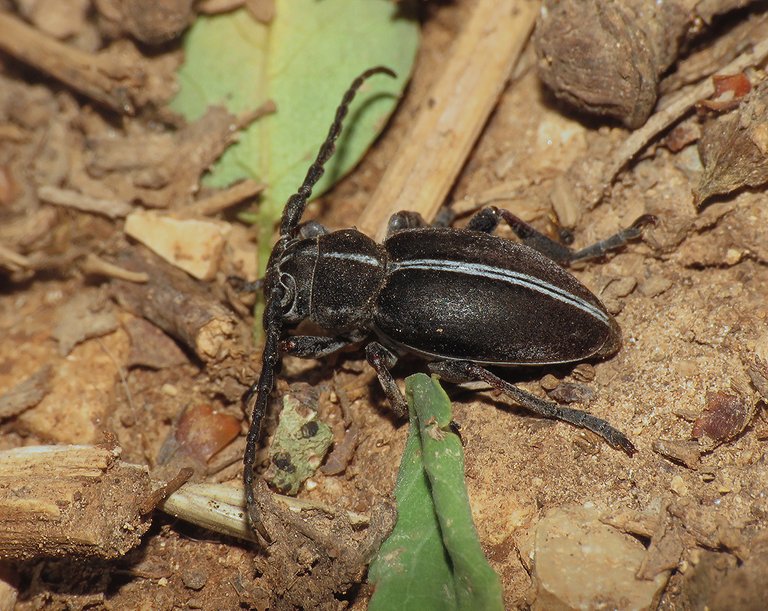
... I found a longhorn beetle. This is the Dorcadion arenarium, a flightless species from the Cerambycidae family.
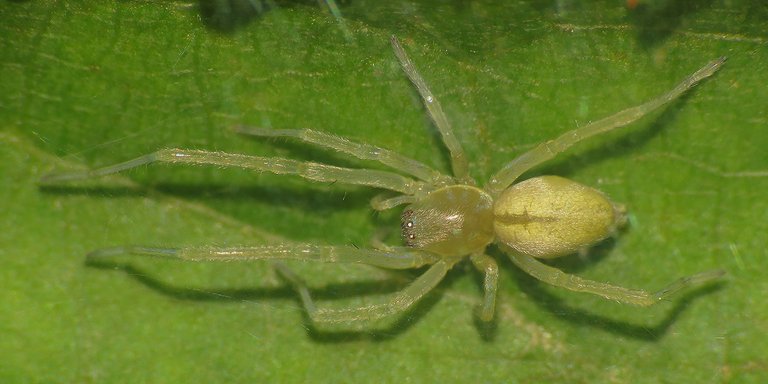
On the vegetation near the path, I found another spider.
In this photograph with a deeper depth of field, you can see the silky threads above the spider.
This is the Cheiracanthium mildei, a species from the Cheiracanthiidae family. Not so long ago, this and related spiders were considered members of the Miturgidae or the Clubionidae family. Now they have their own family.
On the top of the same elongated leaf, I found this dead leafhopper. Can't tell you the exact species but the family is definitively Cicadellidae.
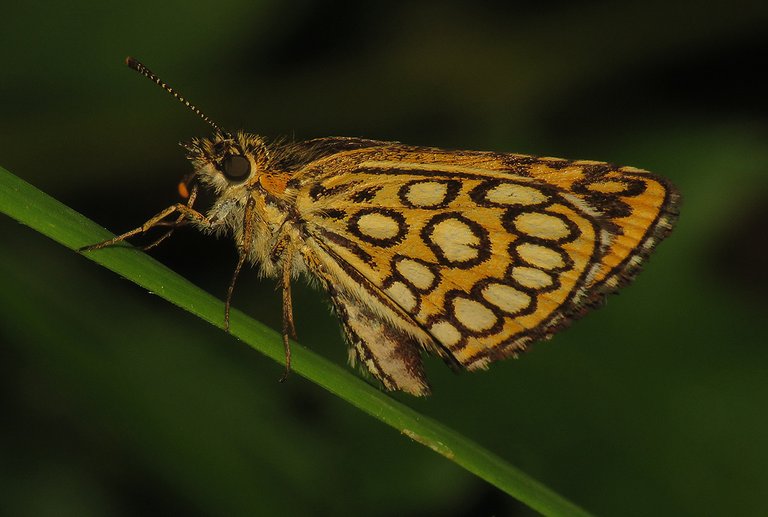
On the grass, not far from there, a small butterfly was resting.

Here you can see some details of the upper surface of the wings.
This is the Heteropterus morpheus, a species from the Hesperiidae family.
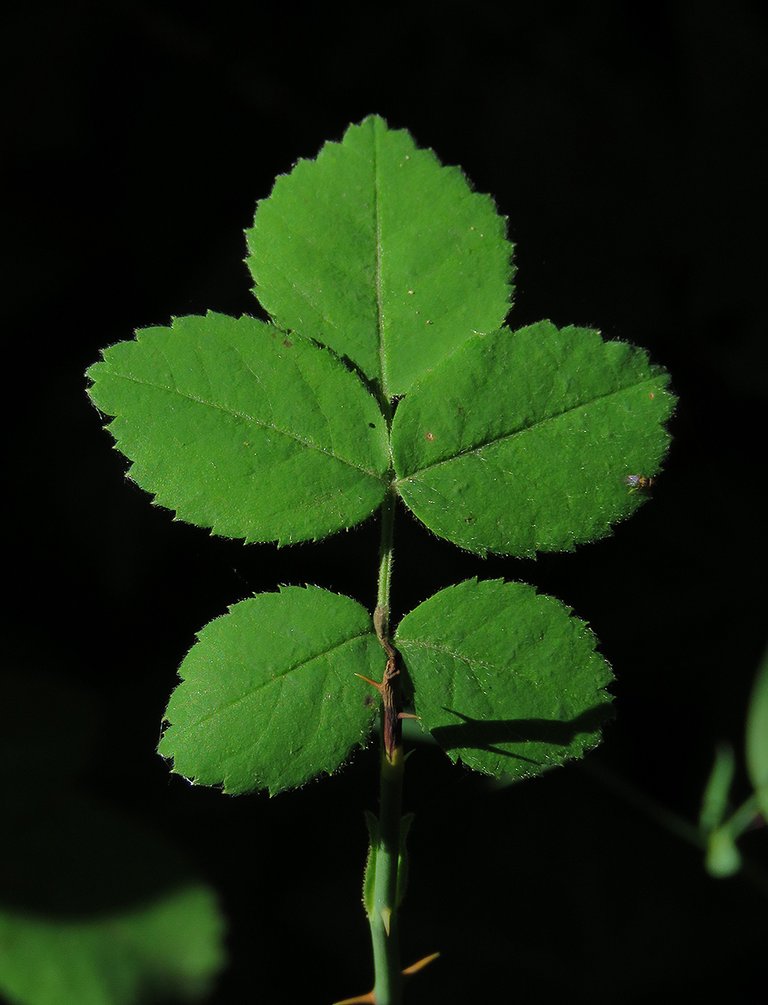
Here you can take a break from arachnids and insects. These are the leaves of the wild rose. I mean, one of the species commonly known as the wild rose. The Rosa caesia.
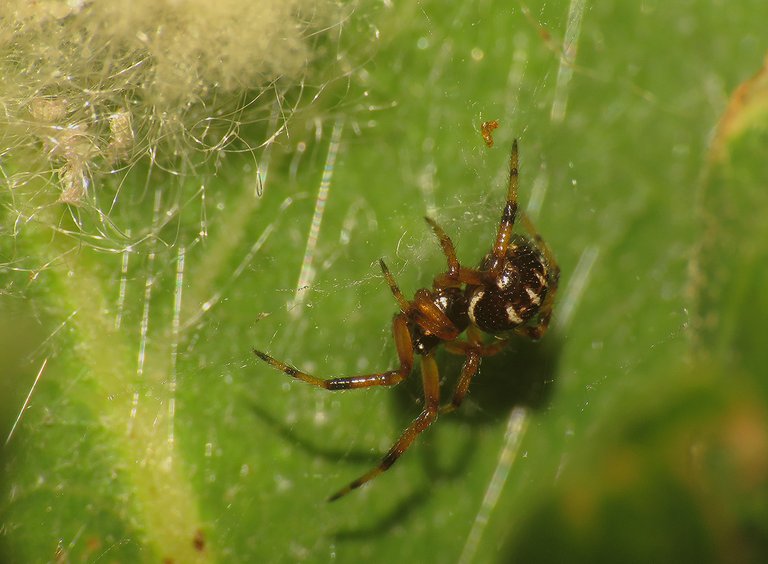
On the 18th of June 2022, I photographed a very small spider that I'm still unable to identify.
That spider has built a loose construction made of sparse, mostly vertical threads.
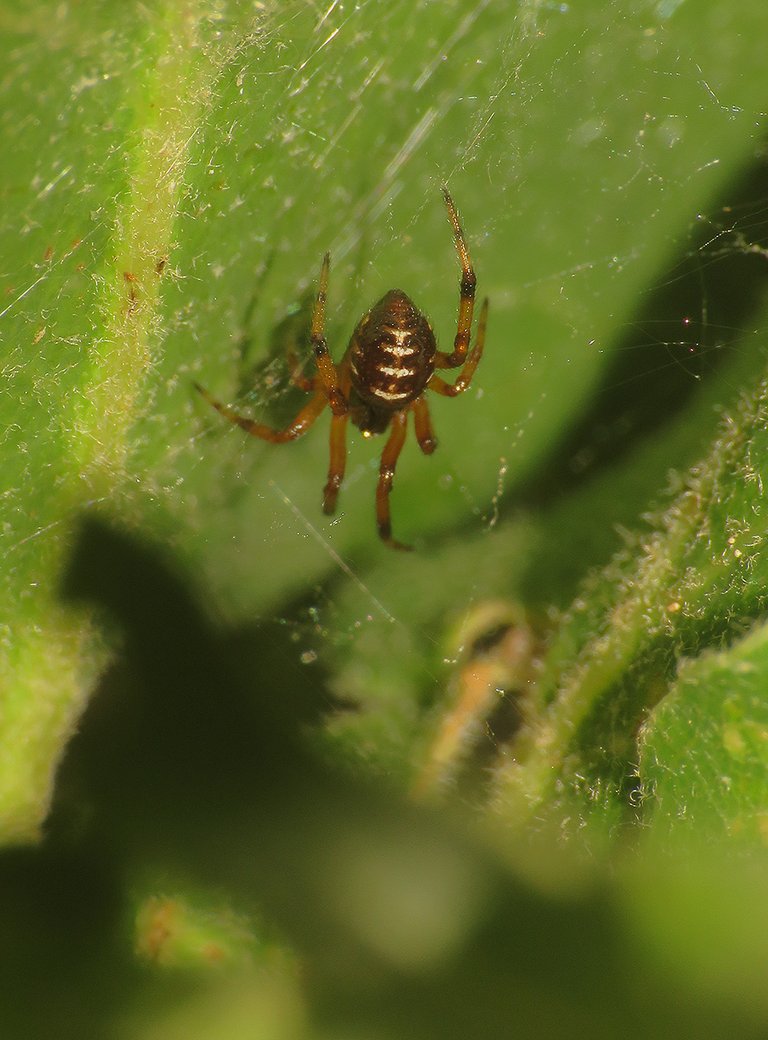
Here you can take a good look at the distinctive markings on the spider's abdomen. However, the most interesting thing about that arrangement on one of the lower branches of a small oak tree ...
... was a large cocoon attached to one of the leaves.
When I visited the same place on 25th of June ...
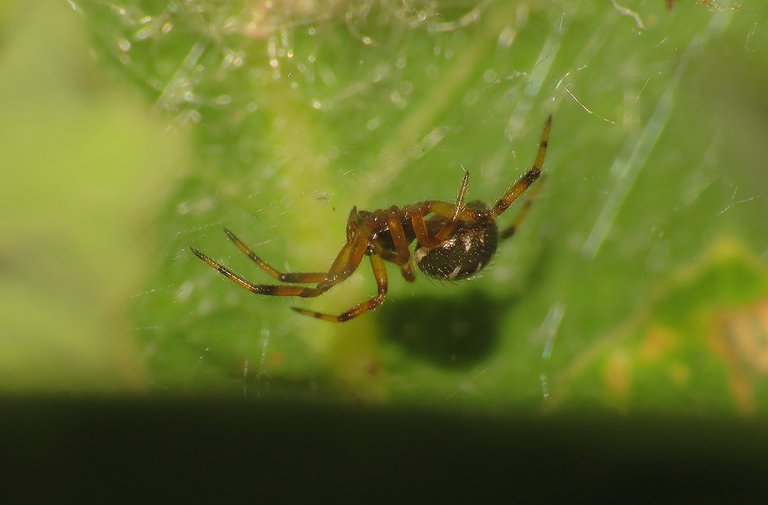
... the spider ...
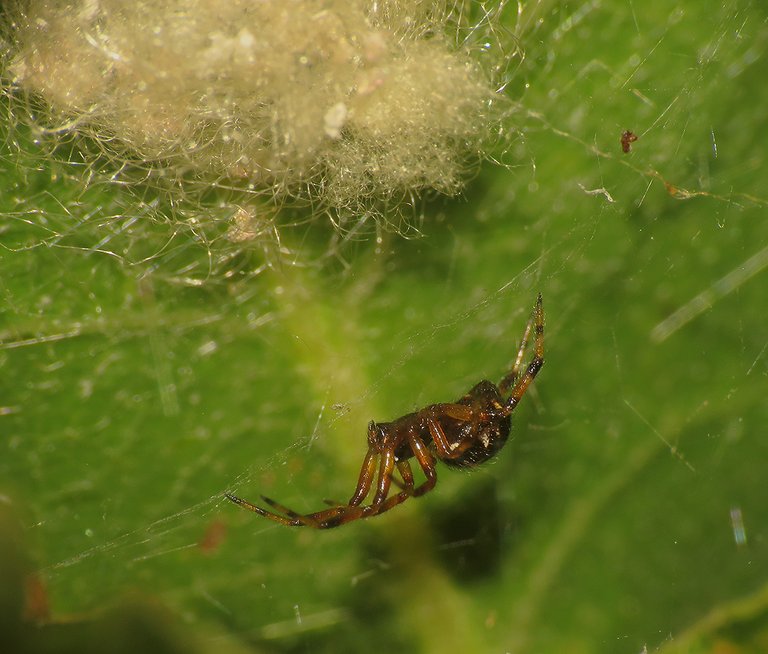
... and what looked like a fluffy nest, were still there.
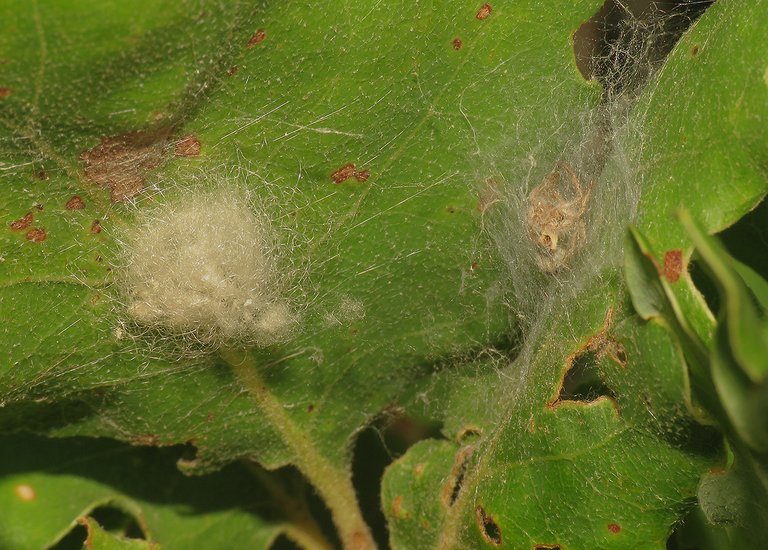
This photograph was taken more than a month later. On the 2nd of August. The cocoon was still there, but the spider wasn't. Near the nest or nest-like cocoon, there was another structure made of silk, and hidden there ...
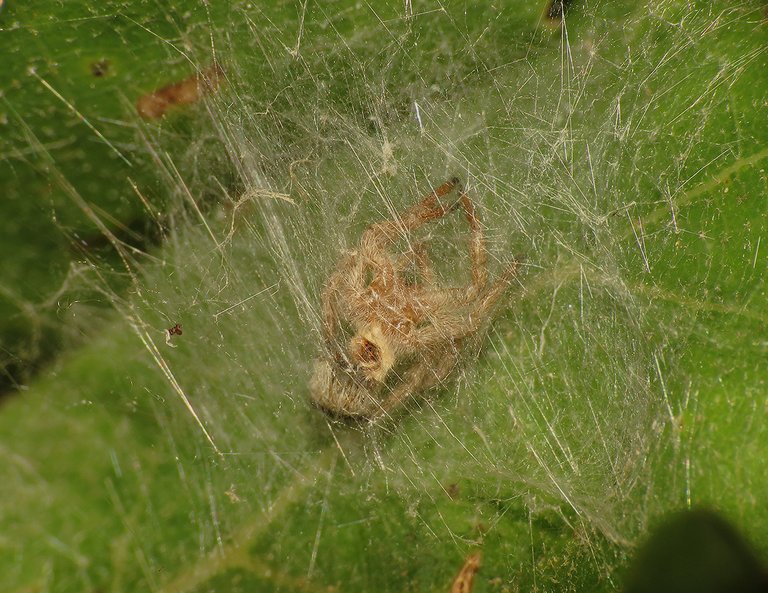
... there was an abandoned exoskeleton. A pretty big exoskeleton with thick, robust legs, that has definitively nothing to do with the small spider that I encountered in June.
I can't tell you more about this finding. Only show you what I saw back then.
If you have some knowledge or theories about this situation, I'll gladly hear them.
With this photograph, I'm back in June, back in the time when most of the photographs shown in this post were taken.
Here you can see the Panorpa communis, a scorpionfly from the Panorpidae family.
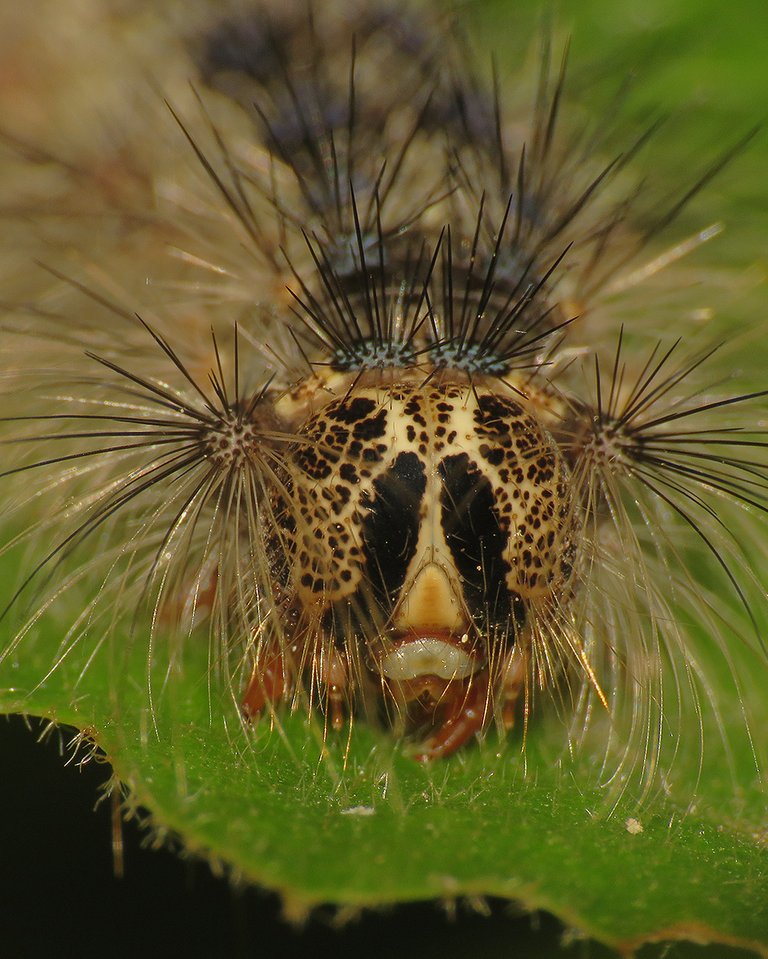
This is a portrait of a caterpillar.
The Lymantria dispar caterpillar. After the metamorphosis, this larva will become a moth.
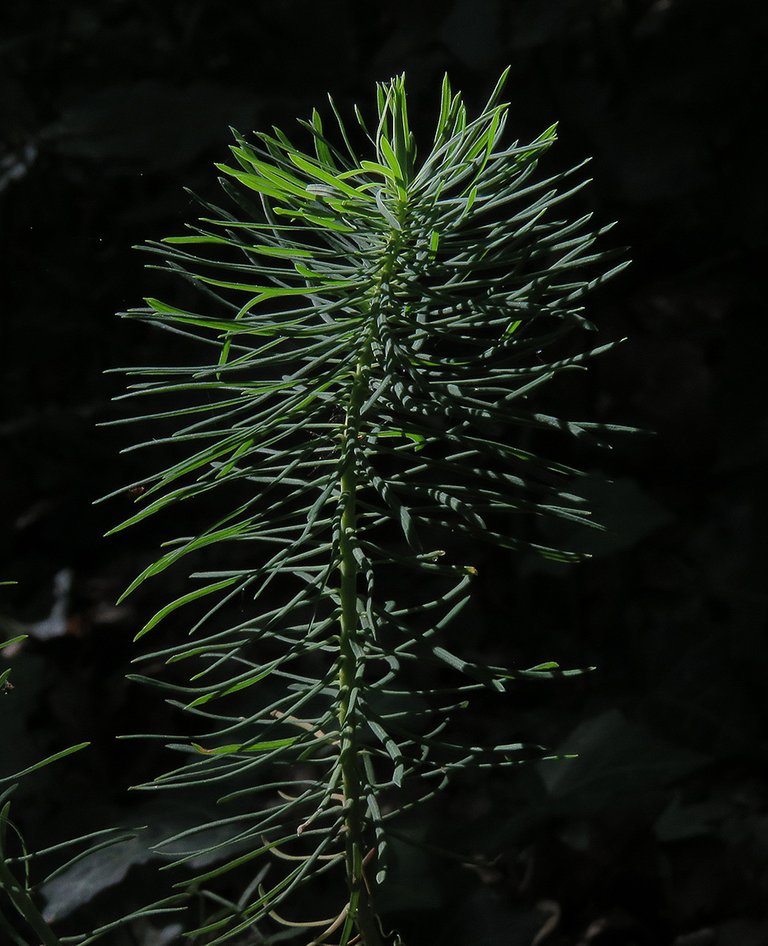
This is another botanical break. With a spurge, this time. This is the Euphorbia cyparissias, commonly known as the cypress spurge.
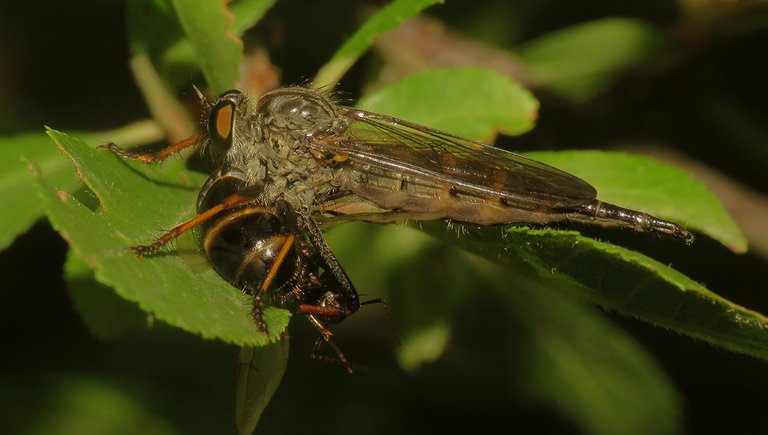
Here you can see a predatory fly with its prey.
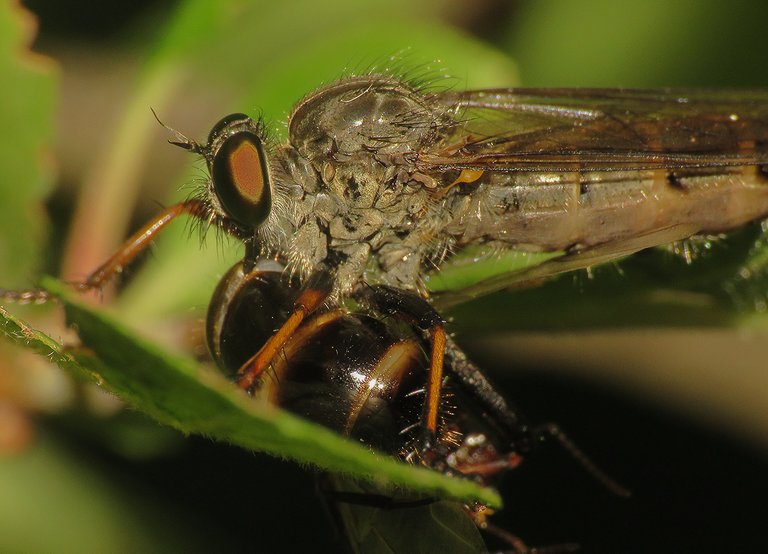
This robber fly (Asilidae family) has caught a winged ant.
In this last photograph, you can see a spider from the Agelenidae family. Allagelena gracilens is the name of the species.
The following links will take you to the sites with more information about some of the protagonists of this post. I found some stuff about them there.
https://en.wikipedia.org/wiki/Ectobius_vittiventris
https://www.inaturalist.org/taxa/225815-Neriene-radiata
https://en.wikipedia.org/wiki/Large_chequered_skipper
https://www.inaturalist.org/taxa/61869-Cheiracanthium-mildei
https://en.wikipedia.org/wiki/Cheiracanthiidae
https://en.wikipedia.org/wiki/Dorcadion_arenarium
https://en.wikipedia.org/wiki/Panorpa_communis
https://en.wikipedia.org/wiki/Lymantria_dispar
https://en.wikipedia.org/wiki/Asilidae
AND THAT'S IT. AS ALWAYS HERE ON HIVE, THE PHOTOGRAPHS ARE MY WORK - THE END.

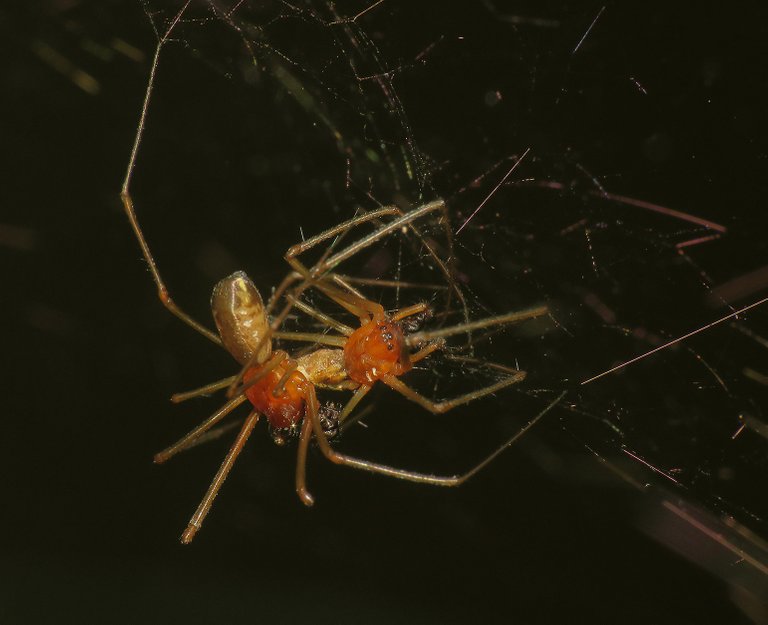

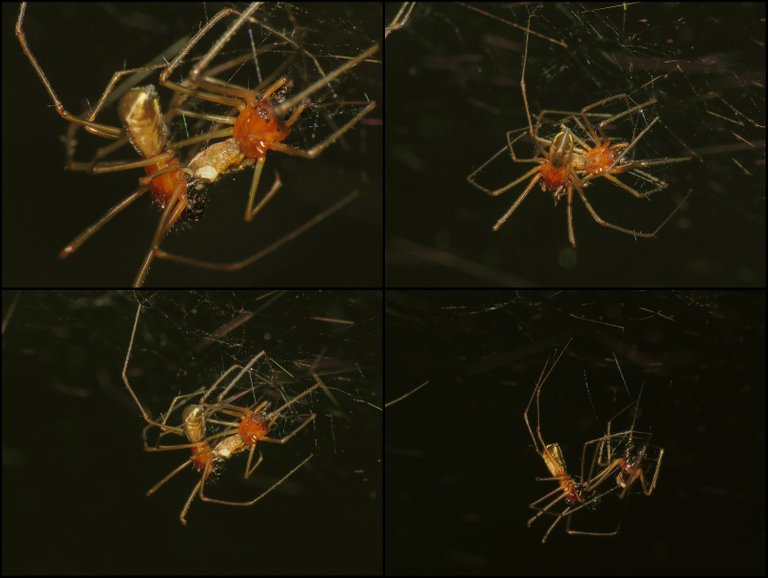
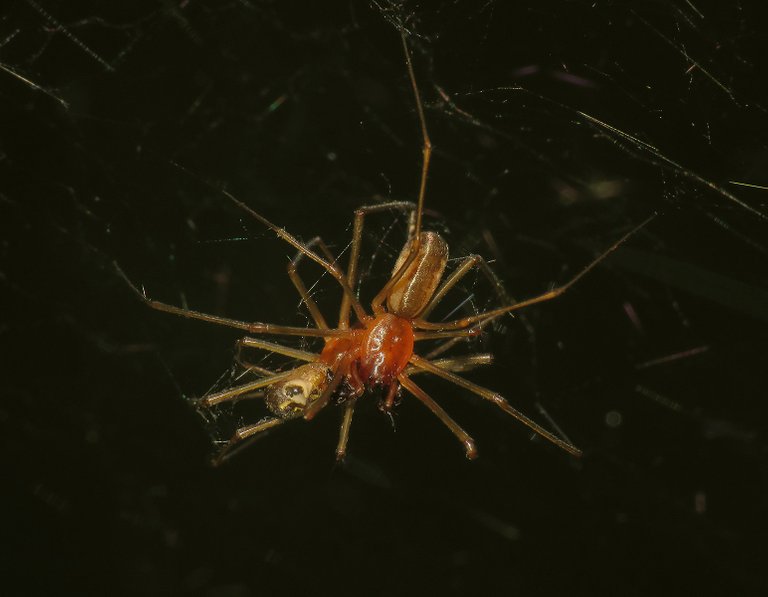
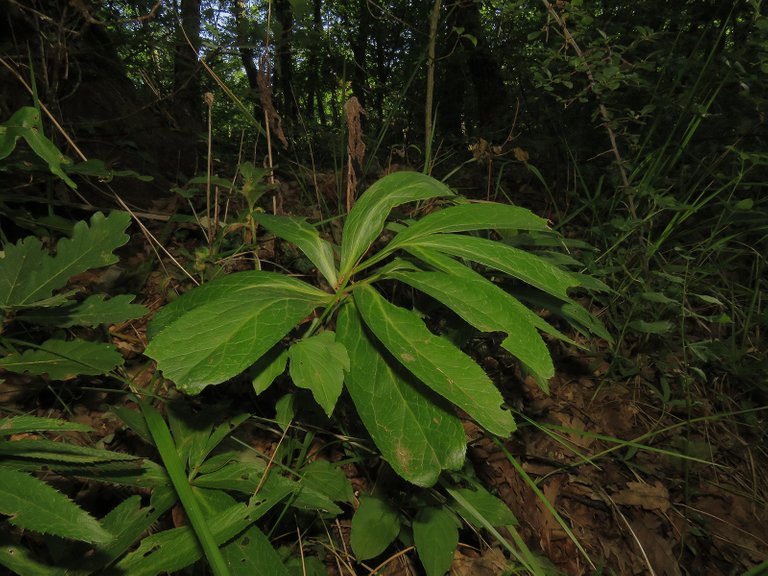
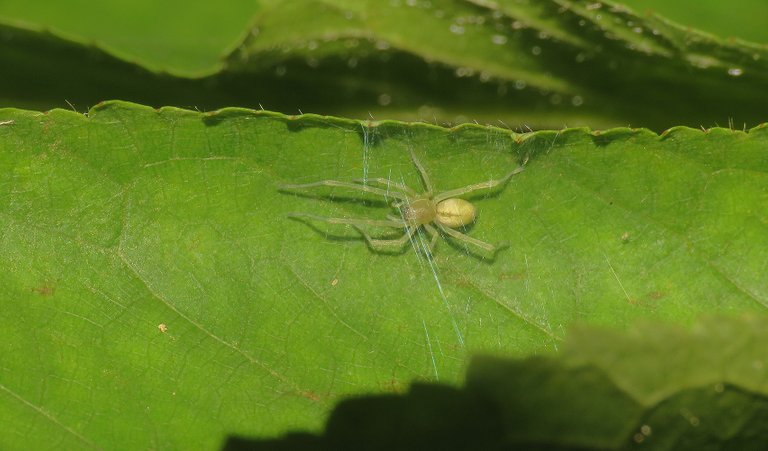
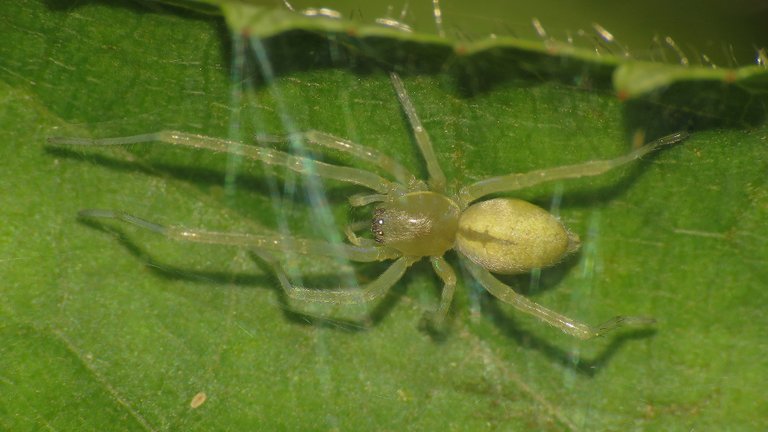
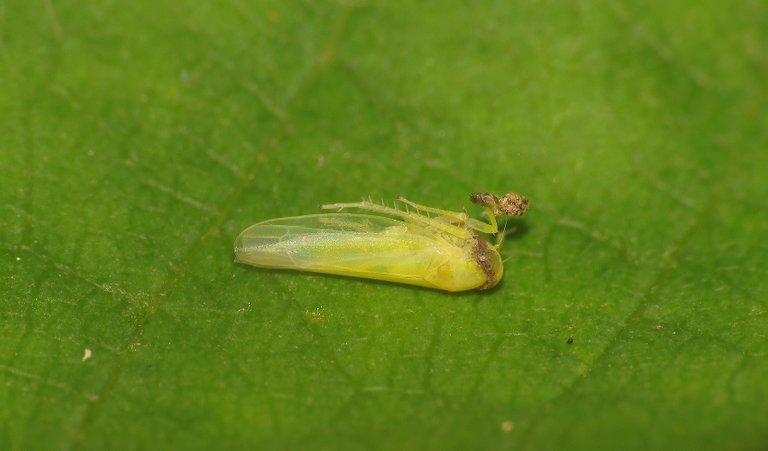
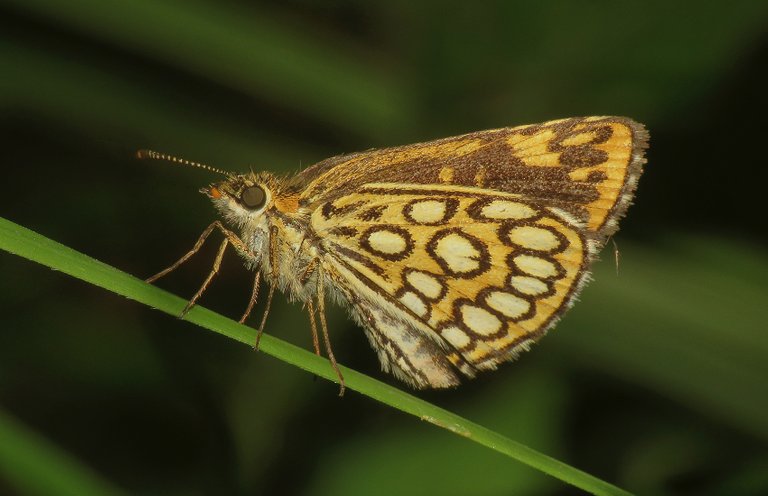
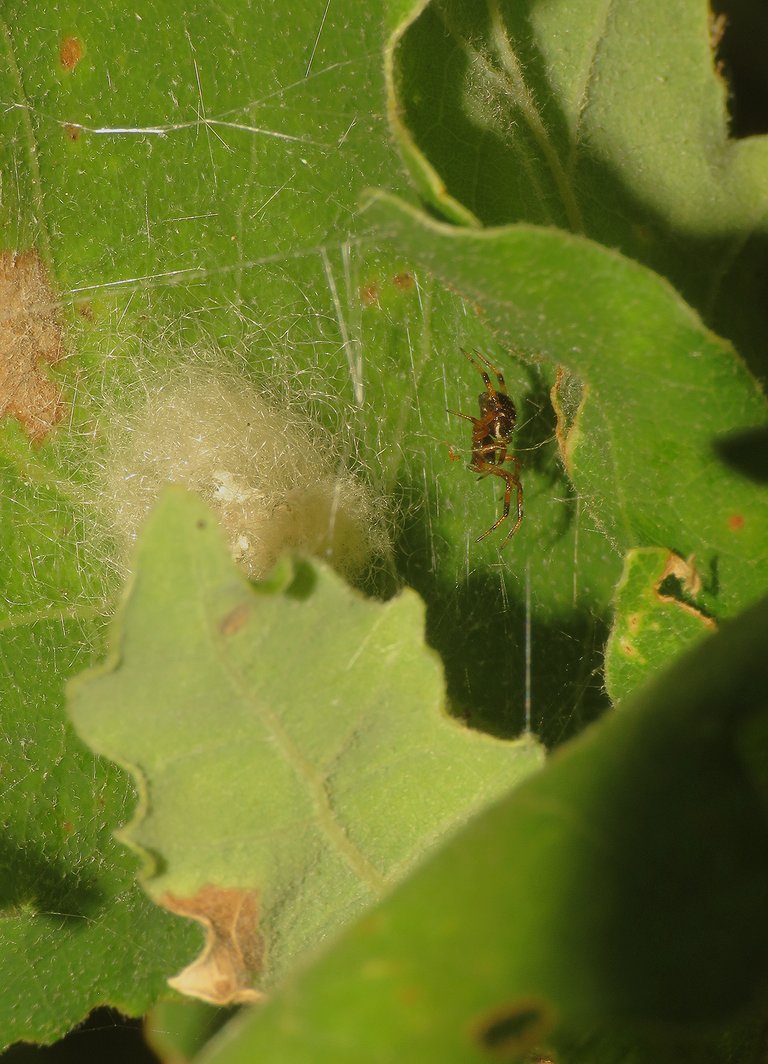

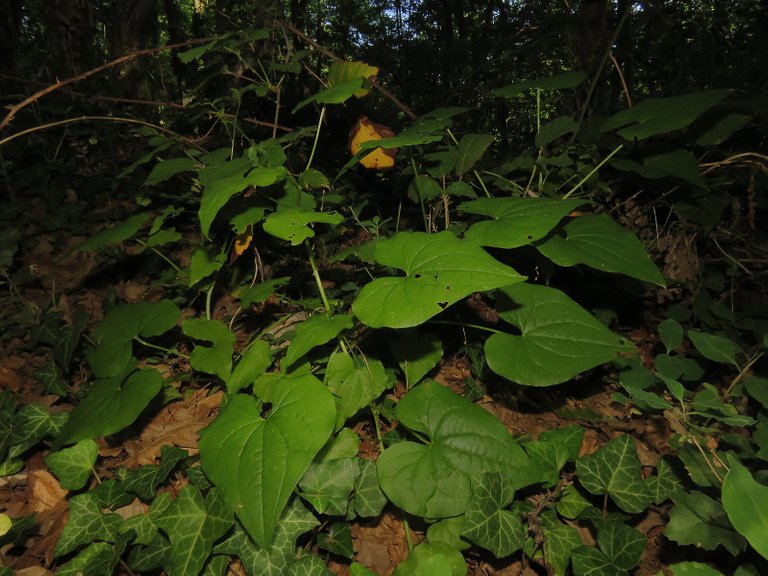

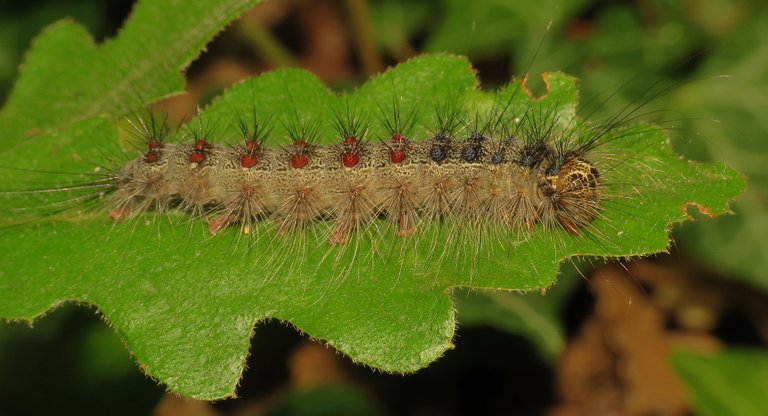
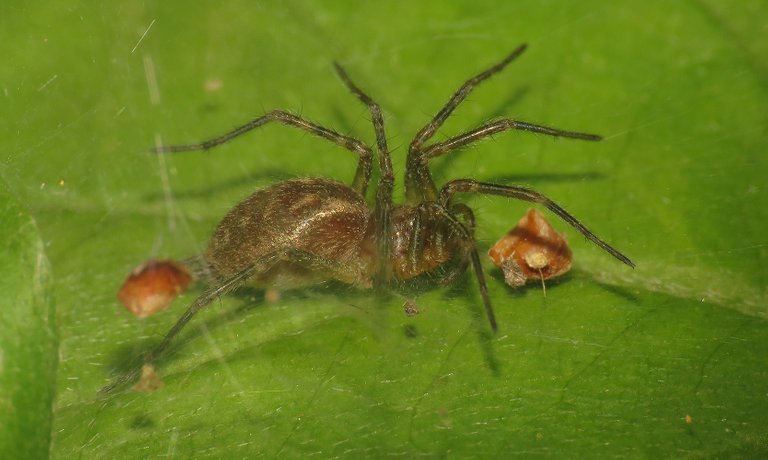
@tipu curate 🌻
Upvoted 👌 (Mana: 41/51) Liquid rewards.
Congratulations @borjan! You have completed the following achievement on the Hive blockchain and have been rewarded with new badge(s):
You can view your badges on your board and compare yourself to others in the Ranking
If you no longer want to receive notifications, reply to this comment with the word
STOPCheck out the last post from @hivebuzz:
Gorgeous photos of wonderful spiders! Always a treat.
If I'm not mistaken, that small spider is a juvenile Steatoda sp. that was hanging around an empty egg sac (not hers, but some other spider's). The exuvia you later found also looks like a jumping spider, but it's really difficult to tell with all the webbing obscuring it. Chances are the other spider ate the juvenile Steatoda before shedding.
Cool. 🙂 Great new information. Thanks. 🕷️
Thanks for your contribution to the STEMsocial community. Feel free to join us on discord to get to know the rest of us!
Please consider delegating to the @stemsocial account (85% of the curation rewards are returned).
You may also include @stemsocial as a beneficiary of the rewards of this post to get a stronger support.
The wings on the cockroach were so lovely! And the face of that caterpillar!
🙂
Fascinating shots! So much going on down there in the forest micro world :) The close up of the scorpion fly is just so cool! I can see that TipU was already here so let me drop it to some other post of yours ;)
🕷️🙂🕷️
Now this is a documentary 😍. Love the pictures, that green spider is incredibly camouflaged, your lucky you took notice of it.
That spider molt.. I wonder which species it is. It's roughly the size of a tarantula I think.
Very nice as always.
The campaign aims to onboard new application developers to grow our ecosystem. If you missed the presentation, you can watch it on YouTube.
You cast your vote for the proposal on Peakd, Ecency, or using HiveSigner.
Thank you!Dear @borjan,May I ask you to review and support the Dev Marketing Proposal (https://peakd.com/me/proposals/232) we presented on Conference Day 1 at HiveFest?
No problem 🙂voted a minute ago. Saw the conferences on youtube. It was cool. 😀Enterteining too. Can't wait to see the documentary presented there.
I like spiders very much, you have captured in a few pictures some very beautiful common specimens.
Nicee i like spidy photos with his webs ♥️👌
Serangganya unik inik dan cantik cantik
Nice post and quality content 👍@borjan this is a great 👍 job
I've learnt another specie of cockroaches that feed on decomposed plant material
Such a beautiful morning shot 📸
Thank you very much @borjan for educating me and other Hivians with quality contents.
#Hive on
Wonderful pictures taken